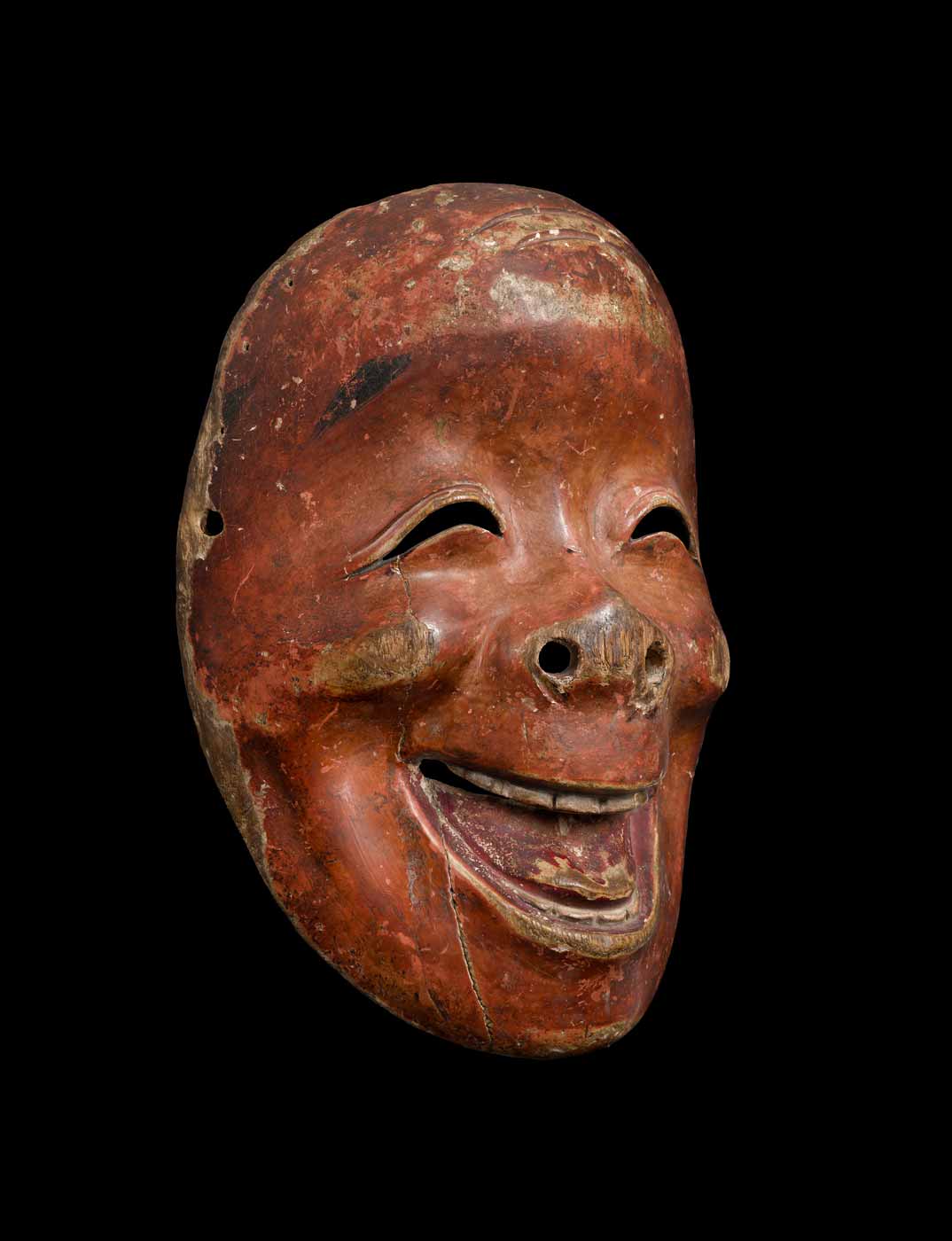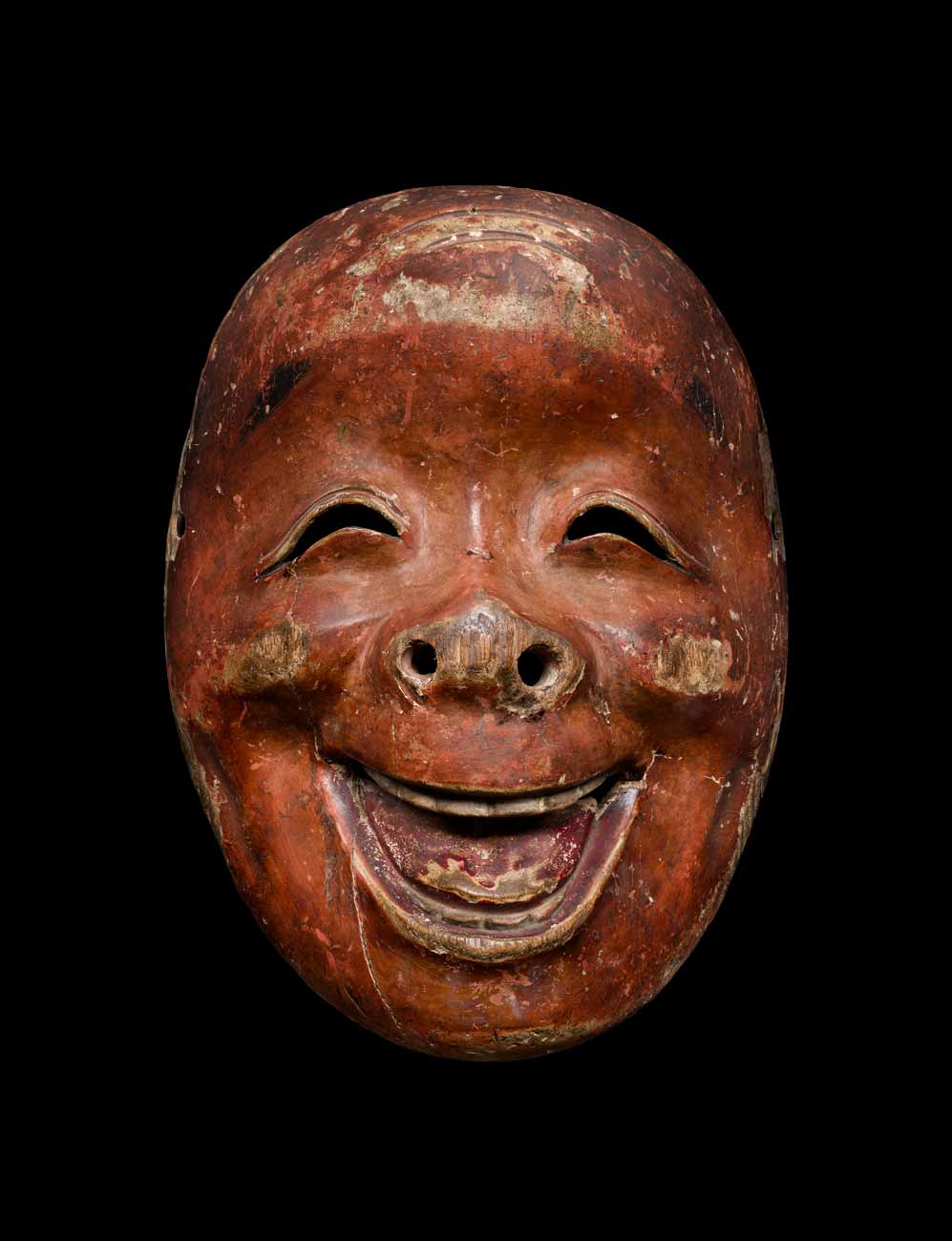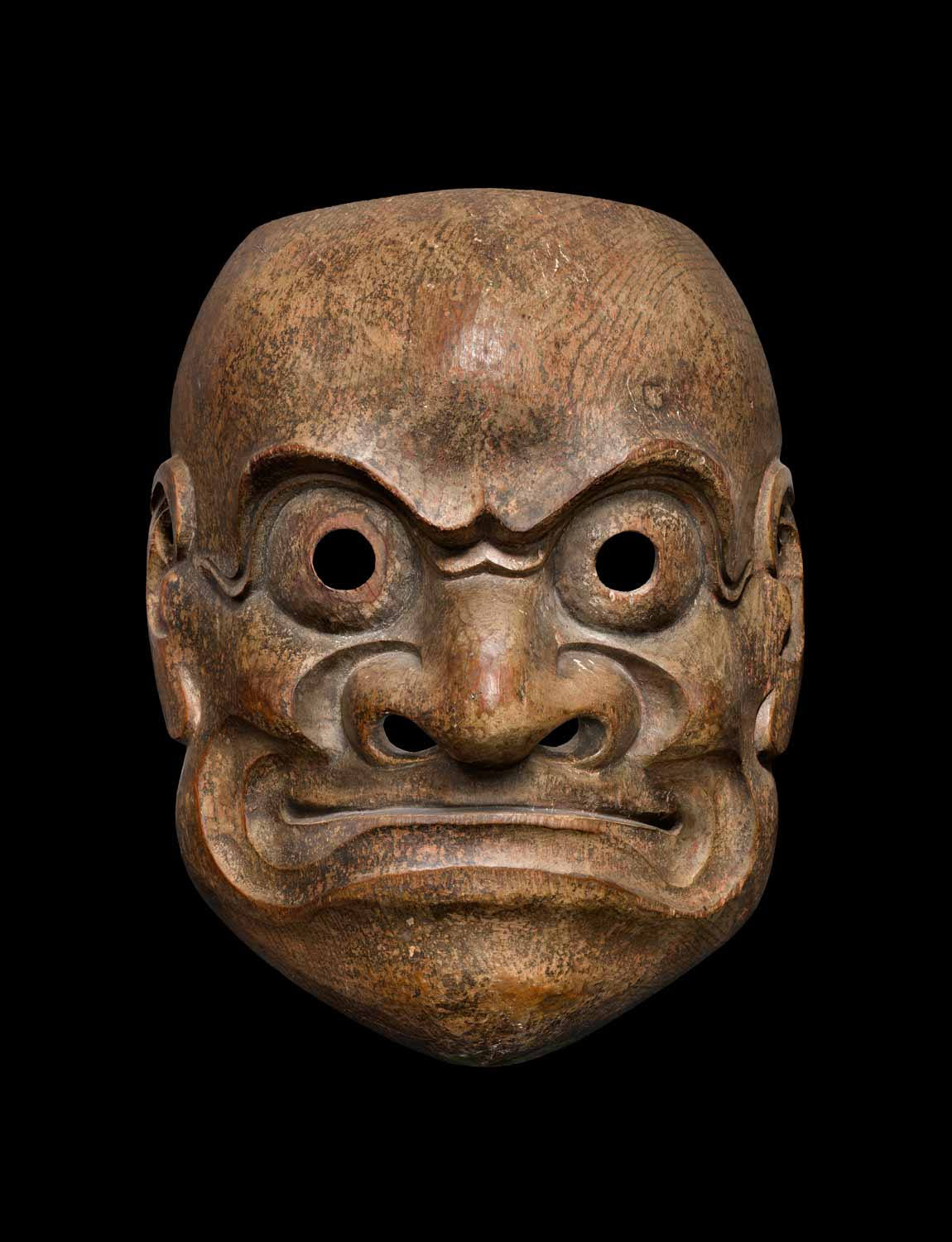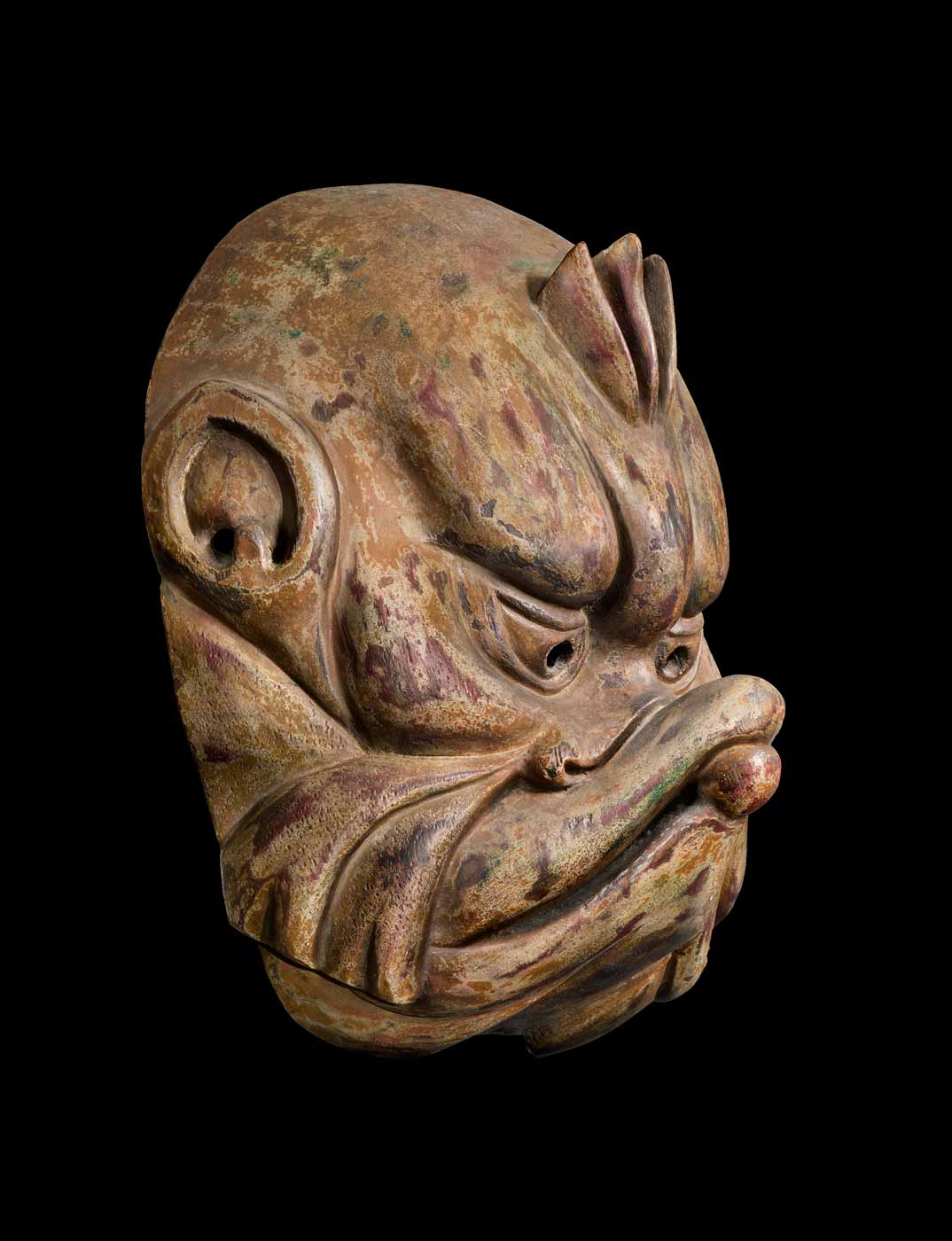Dōkemen
Mask
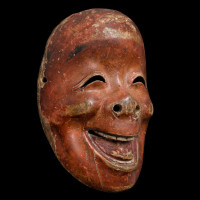
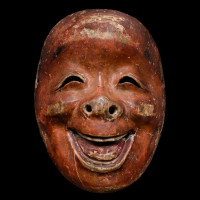
- Contact Us
-
Material
Carved wood, vermillion lacquer (urushi), traces of ritual use.
-
Period
Taishō period – early Shōwa period (circa 1912–1930)
Description
Kagura Mask by Hanyū Mitsunaga 羽生光長
This Kagura mask, with its joyful expression, is attributed to Hanyū Mitsunaga (羽生光長), an artisan active from the late Meiji through the early Shōwa period.
The interior seal, carved in seal script (tenshō), reads “羽生光長作 (Hanyū Mitsunaga saku).” Hanyū Mitsunaga is buried at Chōshū-ji Temple (長秀寺), Tokyo.
Unlike Kyōgen masks used in Noh comic plays, Kagura masks belong to the Shintō ritual sphere, serving in sacred dances dedicated to the kami (deities). The rounded, smiling features, vermilion lacquer, and ritual wear confirm this ceremonial purpose. With only a few exceptions (like Okame and Hyottoko), Kagura masks do not have generic names. Instead, a shrine or troupe would name a mask for the character that it portrayed in the local performance. The same mask could portray different characters or the same character with different local names, so no proper name was ever fixed. This mask was probably worn for a comical or light-hearted role. Such masks are known collectively as dōkemen (道化面).
